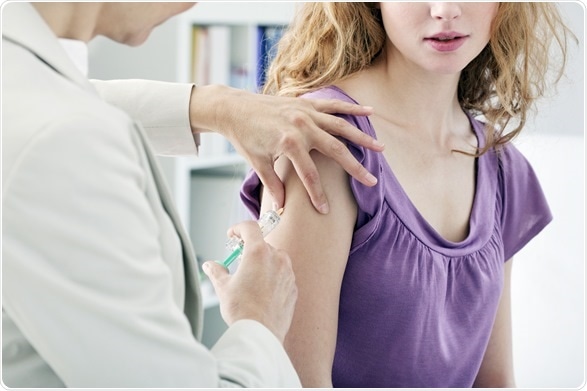Preteens who have not yet received their human papilloma virus (HPV) vaccines only need to have two vaccines rather than three, say federal government advisers.
The change should simplify logistics and reduce the cost of the HPV vaccine, which in turn, should increase the number of children who receive it, advises the panel.

Image Point Fr / Shutterstock.com
The Centers for Disease Control and Prevention (CDC) has immediately accepted the advice from the Advisory Committee on Immunization Practices, a group of public health experts who develop recommendations on the use of vaccines in the US population.
Safe, effective, and long-lasting protection against HPV cancers with two visits instead of three means more Americans will be protected from cancer," says CDC Director Dr. Tom Frieden. "This recommendation will make it simpler for parents to get their children protected in time."
Also from the CDC, Dr Nancy Messonier explains that the three-dose schedule was based on the earliest studies of the HPV vaccine. Studies have now shown that two doses afford equivalent protection. Currently, HPV vaccination lags far behind other forms of vaccination; only 40% of girls and 20% of boys complete the full series of three vaccines, according to CDC estimates for 2014.
In July, the CDC warned that despite access to screening and vaccination, HPV-linked cancers of the cervix, vagina, anus, head and neck are on the rise and that preteen girls and boys should receive the vaccines if they have not yet been immunized.
Based on the new schedule, the first dose should be given at age 11 or 12 and the second dose 6 to 12 months later. Older children who have not received the vaccine before the age of 15, should still receive three doses over a 6-month period because there is not enough evidence to show that two doses would be enough to provide full protection in this group.
The CDC said it will provide guidelines on the new recommendations to parents, healthcare professionals and insurers.